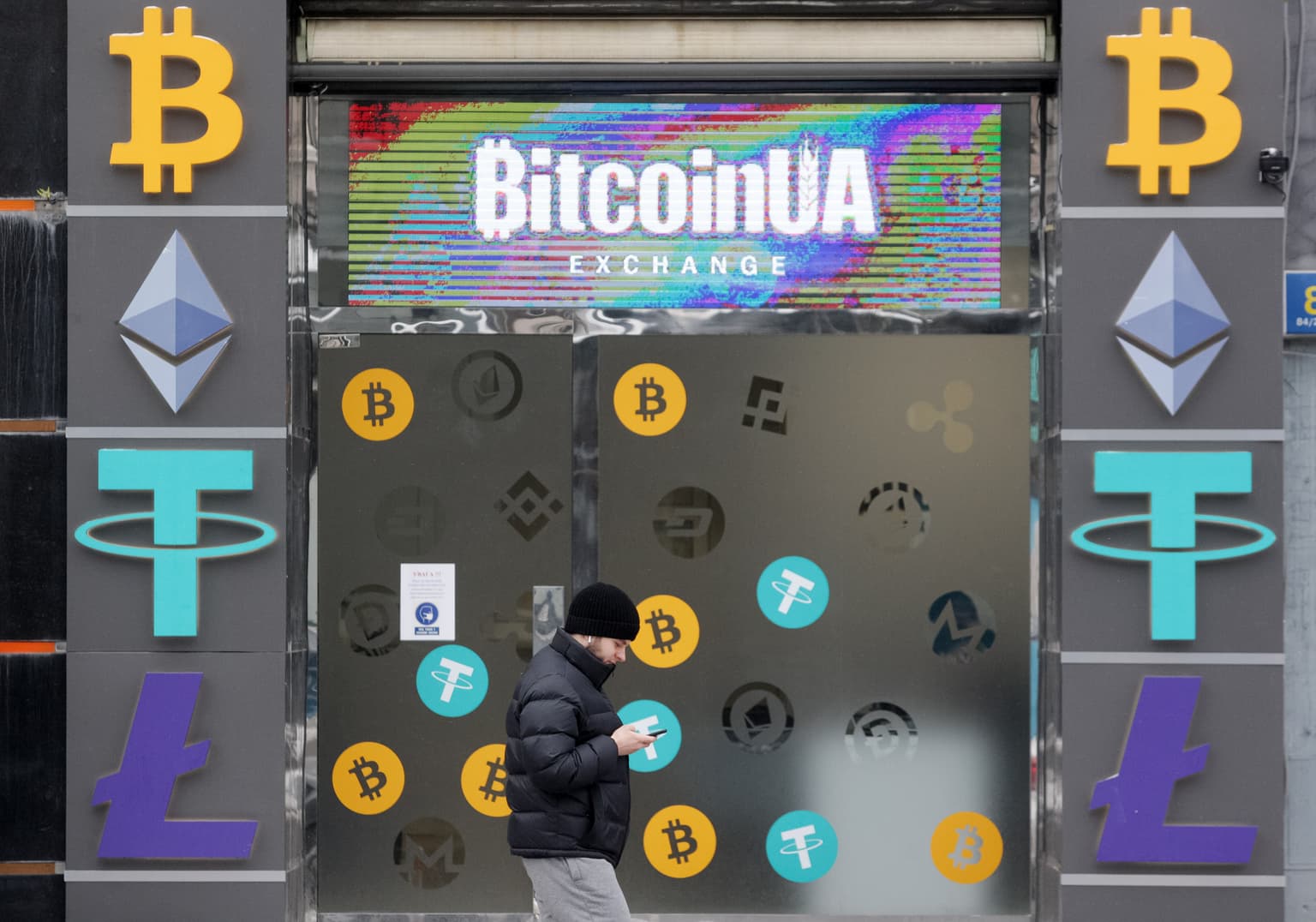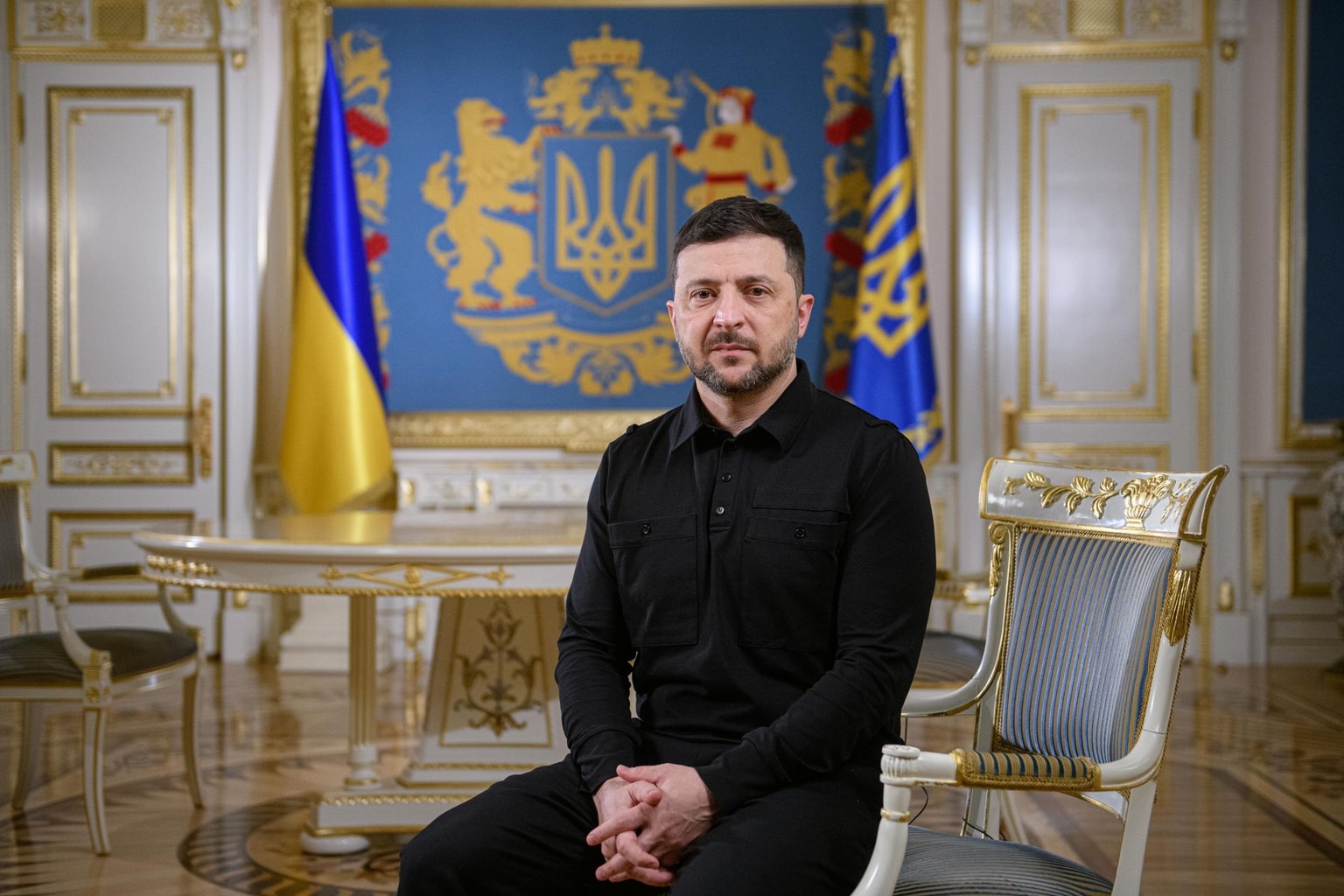Ukraine’s crypto fundraisers undeterred by crypto market crash

The global crypto boom is over, which should have been bad news for Ukraine.
Since the start of Russia's full-scale invasion, Ukrainian charities have raised more than $125 million in cryptocurrency donations to spend on military equipment or humanitarian aid. Another $1.2 million came from the sale of non-fungible tokens, NFTs, digital pieces of art.
Ukraine’s crypto donations did lose value after the sharp drop in cryptocurrency prices. But this doesn’t seem to bother local crypto enthusiasts — they are used to maneuvering in a volatile market.
Charities raising money for Ukraine have a different problem. Cryptocurrency donations are coming in less frequently than they were at the beginning of the war, says Alex Bornyakov, Ukrainian deputy minister of Digital Transformation.
And restoring donor confidence in Ukraine’s cryptocurrency fundraising campaign is difficult as the global crypto market crashes and “war fatigue” sets in. To combat these trends, Ukraine has turned to an unusual weapon in its arsenal — creativity.
The Ukrainian government has called on artists around the world to sell NFTs for cryptocurrency. With this money, Ukraine plans to purchase military equipment and humanitarian aid, as well as rebuild museums, theaters and other cultural institutions.
“We’re using the latest technologies to bring Ukraine closer to victory," Ukrainian Minister of Digital Transformation Mykhailo Fedorov wrote on his Telegram channel.
What happened to the crypto market?
Over the past six months, the global cryptocurrency market has lost nearly $1 trillion in market capitalization, entering a so-called “crypto winter,” – a period of low prices. The price of bitcoin, the world’s most popular cryptocurrency, has plunged by more than 70% since November and is now trading at around $22,000.
Contrary to its initial purpose – to be independent and decentralized – the cryptocurrency market is moving in tandem with traditional finances, like stocks and bonds. These markets have also collapsed in part due to inflation, rising interest rates, supply chain issues, and the war in Ukraine.
Cryptocurrencies have their own problems as well. In May, one of the most popular U.S. stablecoins, Terra, collapsed, costing investors tens of billions of dollars; at least three crypto companies have already filed for bankruptcy due to plummeting crypto prices.
Inexperienced investors, spooked by signs of a market crash, lost confidence in crypto. For veterans, however, this is not the first crypto winter – there were similar downturns in the crypto market 2014 and 2018, but it eventually bounced back.
“The market fell a month ago, today it is more or less stable, but in a week it could resume growth again,” said Viktor Kochetov, CEO of crypto exchange platform Kyrrex.
Ukraine turns to crypto
Ukraine’s crypto traders only came out of the shadows last year when the Ukrainian parliament passed a law legalizing virtual assets in September.
The legislation has come in handy. When the war began, the Ukrainian government quickly began encouraging foreigners to send crypto donations to official wallets to help the Ukrainian military and organizations distributing humanitarian aid.
Stand with the people of Ukraine
— Mykhailo Fedorov (@FedorovMykhailo) February 26, 2022
Now accepting cryptocurrency donations. Ethereum. Bitcoin and Tether (USDTtrc20)
BTC — 357a3So9CbsNfBBgFYACGvxxS6tMaDoa1P
ETH — 0x165CD37b4C644C2921454429E7F9358d18A45e14
USDT (trc20) — TEFccmfQ38cZS1DTZVhsxKVDckA8Y6VfCy
Donating cryptocurrency has its advantages. Crypto transactions are faster, less regulated, and anonymous so people can donate without revealing their identities.
Crypto also helped to pay foreign suppliers of weapons and military equipment when Ukraine’s National Bank limited the ability to make payments and withdraw currency from Ukrainian bank accounts abroad in the early days of the war, according to Bornyakov.
“Thanks to crypto fundraising, we could quickly purchase and deliver the equipment to the front lines for our defenders,” he told The Kyiv Independent.
It is difficult to accurately estimate exactly how much money Ukraine has attracted in cryptocurrency since the beginning of Russia’s invasion. As of April, there were almost 40 verified government and private organizations that accepted crypto donations.
According to blockchain analyst Crystal, Ukraine has raised over $125 million in crypto donations as of May. More than half of the donations have been made in ETH (ether), BTC (bitcoin), USDT (Tether), and BUSD (Binance USD), the prices of which started to fall rapidly in April-May, according to CoinDesk.
According to official reports, the largest of these 40 organizations, Aid for Ukraine, Come Back Alive, Binance Charity, and Unchain Fund have raised $60 million, $28 million, $10 million, and $9 million respectively.
Salvaging crypto donations
Luckily, Ukraine received most cryptocurrency donations in the first few months of the war, when prices on the crypto market were higher. Local charities say they tried to spend the money as quickly as possible.
As of today, Aid for Ukraine told The Kyiv independent that it has about $3 million left in its crypto wallets; Come Back Alive – around $8 million; Unchain Fund – nearly $73,000.
In order to preserve these funds, many Ukrainian charities, including Aid for Ukraine, Unchain Fund and Kyrrex Charitable Foundation, convert them into stablecoins.
Stablecoins are fixed-price cryptocurrencies whose market value is usually pegged to the dollar. They are the most stable among cryptocurrencies, according to Kochetov.
Another option is to convert virtual money into fiat. The Save Ukraine fund founded by the crypto firm Exmo told The Kyiv Independent that it did not suffer any losses when the cryptocurrency market crashed because it accepted part of the donations in USDT stablecoins, and converted the rest into fiat currency.
Cryptocurrencies are much better for raising funds, and fiat – for spending, according to Exmo.
Aid for Ukraine said it converted donations to fiat only if the legislation of a foreign country did not allow paying for the military equipment in cryptocurrency.
To make crypto donations more secure, charities are also trying to diversify their portfolios by accepting different currencies. Unchain, for example, has received donations in 14 cryptocurrencies, and Aid for Ukraine – in 16.
Keeping the crypto coming with NFTs
“War fatigue” and the crypto market crash have led to fewer crypto donations to Ukraine from foreigners. “Many people are waiting for the stabilization of the market and the opportunity to invest their savings without additional costs,” Kochetov said.
Ukraine has no time to wait – using all of its creativity to remind foreigners about the crypto fundraising campaign, the government has decided to launch patriotic NFTs.
“While Russia uses tanks to destroy Ukraine, we rely on revolutionary blockchain tech,” Fedorov wrote on Twitter on March 25, after launching Ukraine’s first NFT Museum, which sells war-themed art. The museum has collected almost $1.3 million from the sale of blockchain-based digital art.
Residential apartment blocks in Ukraine's capital of Kyiv have been struck by Russian air strikes over several days, leaving residents' homes destroyed
— Meta History: Museum of War (@Meta_History_UA) July 23, 2022
Buy it know: https://t.co/dtSmPx3Djj pic.twitter.com/uMOPx5FoQI
NFTs are just as volatile as cryptocurrencies and suffered losses amid the crypto crash. Global NFT sales fell from $12.6 billion in January to $1 billion in June, according to the crypto research firm Chainalysis.
Ukrainians are not discouraged. “Some people may still think that NFTs are just stupid pictures, but we don’t care,” the NFT Museum tweeted after reporting that it spent more than $33,000 from the NFT sale to buy 25 tons of fuel for soldiers’ vehicles.
Private Ukrainian companies and NGOs have also joined the NFT race. One of Ukraine's largest beer brands, Obolon, plans to sell NFTs to help it distribute free water for humanitarian aid. In May, Ukrainian game developers launched NFT collection called Avatars for Ukraine and raised over $25,400 for medical aid.
Donations in cryptocurrency or from the sale of NFTs cover only a small part of the money that Ukraine receives from local and foreign donors. As of April, the total amount of donations that Ukraine attracted from allies, international funds and private individuals exceeded $16 billion, according to Forbes Ukraine.
However, crypto fundraisers are not competing with traditional fundraising, according to Bornyakov. “This is just another way to raise funds for the needs of Ukraine.”










